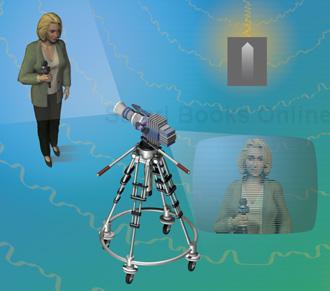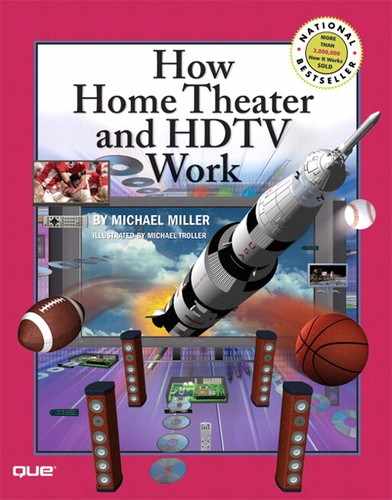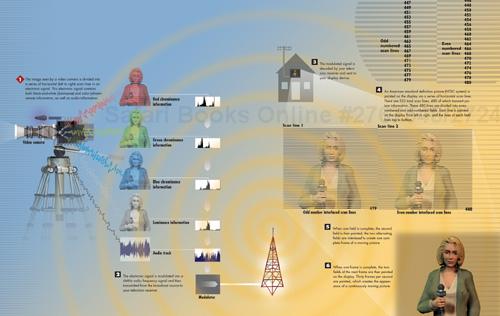
For years we’ve received our television programming over the air, broadcast from a local television station and received by a set-top or roof-top antenna attached to the living room TV set. While there are now plenty of other ways to receive audio/video programming—via cable, satellite, and DVD—many Americans still receive over-the-air (OTA) broadcasts, and the OTA broadcast system is the basis of all the other transmission systems that have developed since then.
There are several technological principles on which OTA television broadcasts are based. First of these is the science of perception. What we perceive as a moving picture is actually a series of still pictures, flashed one after another in rapid succession. The pictures flash by so quickly that this succession of pictures flow together and appear to be in movement.
This perceived motion is even more extraordinary when you consider that each individual picture is actually comprised of hundreds of individual horizontal lines, painted across the screen one after another. That’s how the picture is encoded for transmission; the original picture is sliced into these horizontal lines and then the horizontal lines are redisplayed at the receiving end of the chain. Your mind combines these lines and “sees” a complete picture—one full picture every 1/30 of a second.
Finally, we’re faced with the challenge of transmitting all those lines and pictures from the local television station to your house. This is accomplished using radio waves, which travel through the air from the transmitting antenna to the receiving antenna. Every television station broadcasts at a specific frequency in either the Very High Frequency (VHF) or Ultra High Frequency (UHF) band. For example, television channel 8 is assigned to VHF frequency 181.25MHz; channel 40 is assigned to UHF frequency 627.25MHz.
At that assigned frequency, the television station broadcasts a signal that is exactly 6MHz wide. Within this 6MHz bandwidth is all the information necessary to create the moving pictures and sound of a television program. Part of that 6MHz signal is devoted to the basic black-and-white component of the picture; another part of the signal is devoted to the color component; and yet another part of the signal is devoted to the audio component. Put them all together, and you have the television signal your home antenna receives and your TV set displays. It might sound complex, but it works!
American television viewers might be surprised to learn that the television they watch in the United States isn’t the same as that shown in many other countries. That’s because three different SDTV color broadcast standards are currently in use around the globe. The American National Television System Committee (NTSC) system was the first standard adopted, in 1953, and as such isn’t quite as technically advanced as systems developed more recently. The Phase Alternation by Line (PAL) system was developed in the U.K. and Germany, while the Systeme électronique Colour avec Memoire (SECAM) system was developed in France. Because both these European systems use a larger number of scan lines, they are incompatible with the American NTSC system; you can’t play NTSC discs and tapes on a PAL or SECAM television, and vice versa.
Fortunately, the global community has adopted a single worldwide standard for digital HDTV broadcasts, one that can work with the various electrical voltages used in different countries. (This follows an aborted Japanese attempt to introduce an analog HDTV system.) So, HDTV programming can be shown in any country around the world, with no expensive conversion required.
Table . NTSC vs. PAL vs. SECAM
System | Full Name | Developing Countries | First Color Broadcast | Total ScanLines | Vertical Resolution | Aspect Ratio | Frame Rate (frames per second) |
|---|---|---|---|---|---|---|---|
NTSC | National Television System Committee | United States | 1953 | 525 | 480 | 4:3 | 30 |
PAL | Phase Alternation by Line | United Kingdom Germany | 1967 | 625 | 576 | 4:3 | 25 |
SECAM | Systeme électronique Couleur avec Memoire | France | 1967 | 625 | 576 | 4:3 | 25 |







